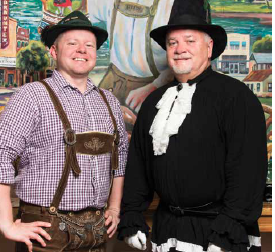By Tracy L. Barnett
Photos by Sarah Lim
For Texas Journey magazine
 Lively polka tunes mingled with the scent of grilled bratwurst. A bevy of girls in Bavarian dirndls bounced by aboard a hayride. A young
Lively polka tunes mingled with the scent of grilled bratwurst. A bevy of girls in Bavarian dirndls bounced by aboard a hayride. A young
family tried ninepin bowling on a wooden plank. Then a fellow in a plumed hat, ruffled shirt, and tall riding boots caught my eye.
“Pardon, may I ask,” I began.
He held out a white-gloved hand. “Prince Carl, madame. Charmed, I’m sure.”
For a moment, I could have imagined myself in 19th century Germany. But I was actually 5,000 miles and nearly two centuries away in New Braunfels, at the annual Folkfest celebration of the town’s German pioneer heritage.
There was plenty to celebrate. During the 1800s, an estimated 5 million Germans immigrated to the United States. While many went
to New York and Pennsylvania, thousands came directly to Texas by way of Galveston, and a German belt developed from the port city to Kerrville. By 1860, there were more than 20,000 Germans in the state; another 40,000 arrived after the Civil War.
Today, German immigration to Texas is most associated with bratwurst, polka, and Oktoberfest celebrations. But as a descendant of German immigrants myself — my great-great grandfather arrived in New York from Baden, Germany, in 1846 — I wanted to explore the rich history of German Texas, and to see how the state’s German past lives on today.
Download the PDF here GermanTexas to read the rest of the story, published in the Nov/Dec 2017 issue of Texas Journey magazine.
Leave a Reply